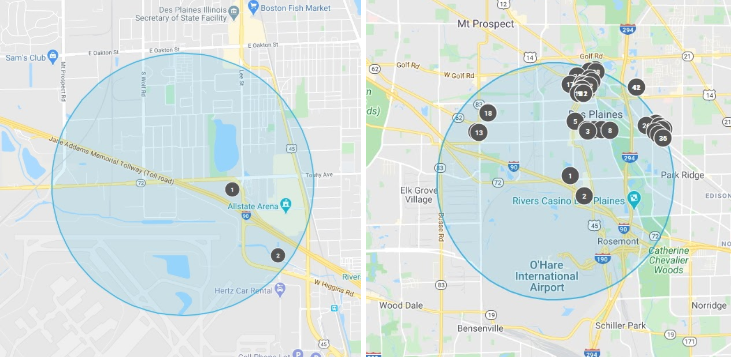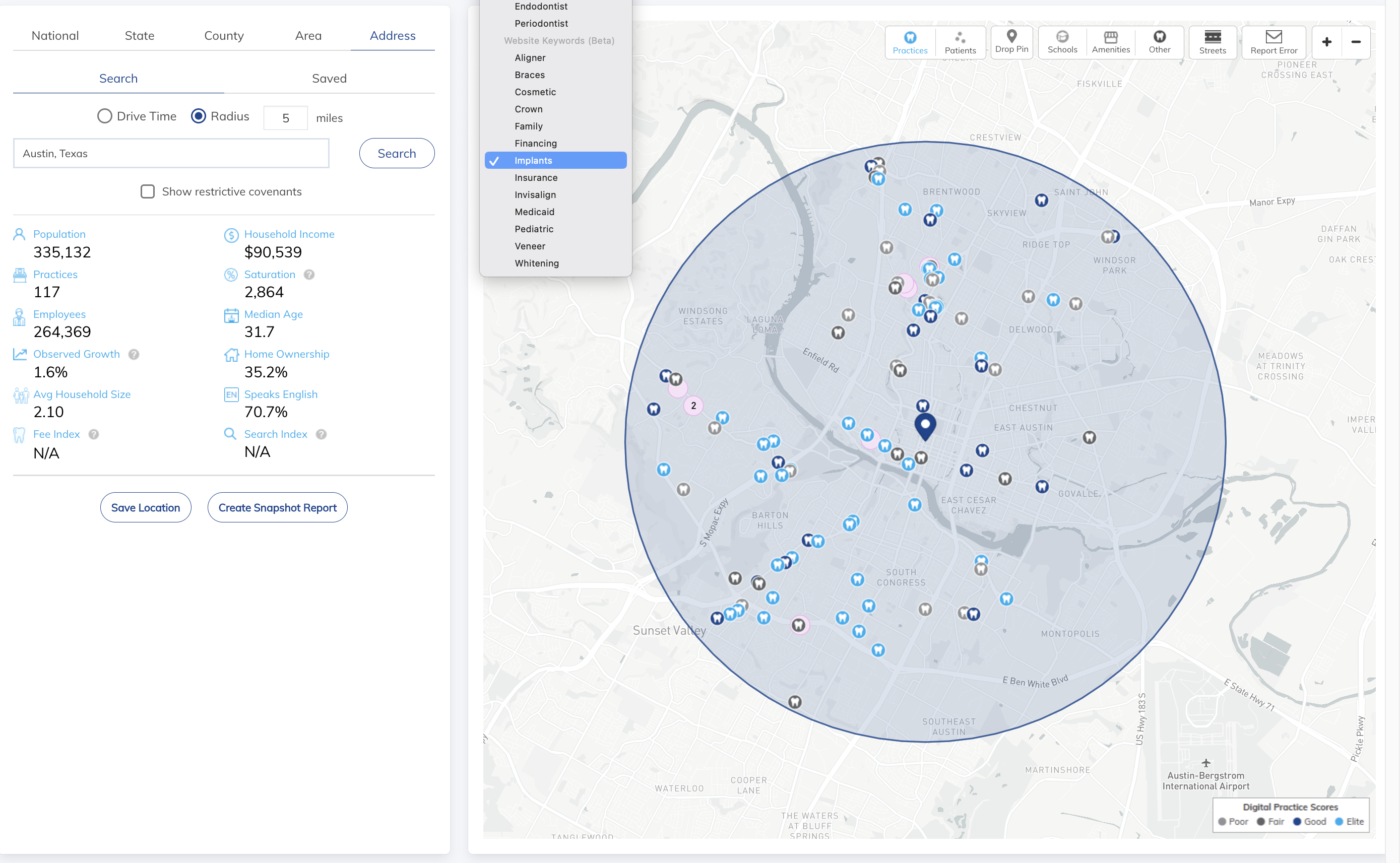In this increasingly mobile age, dentists are always looking for the best places to practice. Among other factors like weather, cost-of-living and proximity to friends and family, the level of competition often comes to mind when conducting research. So, at the beginning of 2023, which areas of the country are the most competitive for dentists and which are the least?
Before we get started, we want to note that each of these metro areas is comprised of dozens of sub-markets and that conditions can vary greatly within a region. But if you’re throwing a dart at a map of each of these cities, the bullseye might be a bit larger in some markets than others.
Methodology
As developers of a database of privately-owned dental practices which have been manually-verified by our in-house research team, we are uniquely qualified to answer this question. Note that this article only analyzes the nation’s thirty-five metropolitan areas with total populations of more than two million residents. If you’re not familiar with what a metropolitan area is, it includes both a central city like Indianapolis as well as its suburban markets like Carmel. If you’re interested in a smaller town or city, check out our lists of the Most and Least Competitive Medium-sized Cities and Most and Least Competitive Small Cities.
The Ten Most Competitive Big Cities to be a Dentist

The Ten Least Competitive Big Cities to be a Dentist

Findings
There are two obvious patterns that we can observe. The first is a negative correlation between population growth and dental competition. As many of you may have suspected, we see lower levels of competition in high growth areas. Eight of the ten least competitive metro areas saw population growth of 10% or more between 2010 and 2021 while only three of the ten most competitive markets did so. But don't take this to mean that all high growth cities are less competitive. As we can see in a market like Seattle, strong population growth does not always result in low dental competition levels.
The second input influencing the level of competition in big cities is household income. Of the thirty-five areas considered, six of the ten highest income markets were also among the ten most competitive. Similarly, six of the ten lowest income regions fell within the ten least competitive. This is no surprise to us as we often see that household income is one of the strongest determinants of the level of competition in a market.
The Best Big Cities to be a Dentist
Minneapolis: There were a few standouts, however, that bucked the bigger trends. If you're looking for a growing, high income market with a relatively low level of competition, look no further than Minneapolis. Not only did this metropolitan area of over 3.5 million see a population increase of about 10% between the 2010 Census and 2021 but also reports among the highest income levels of big cities nationwide. In addition, its ratio of 4,109 residents per general dental office ranks fourth best. Maybe it's the cold weather that keeps dentists away?
Other big cities with low levels of competition and double digit population growth (though more modest income levels) include San Antonio, Atlanta and Columbus, Ohio.
The Worst Big Cities to be a Dentist
Pittsburgh: It may not have the population of New York or Los Angeles but Pittsburgh managed to report competition levels similar to that of Miami and Dallas-Fort Worth - metro areas with populations that are 2-3 times bigger. Unlike South Florida and North Texas, however, Greater Pittsburgh is home to fewer residents today than at the time of the 2010 Census as well as a bottom-ten income level.
If you're wondering where else the numbers are less favorable, the Greater Detroit and Chicago areas narrowly escaped this dubious distinction. Both are actually more competitive than Pittsburgh in terms of residents per general dental office and Greater Chicago also has seen a population decrease since 2010. Significantly higher income levels, however, saved them from the bottom ranking.


.png)



